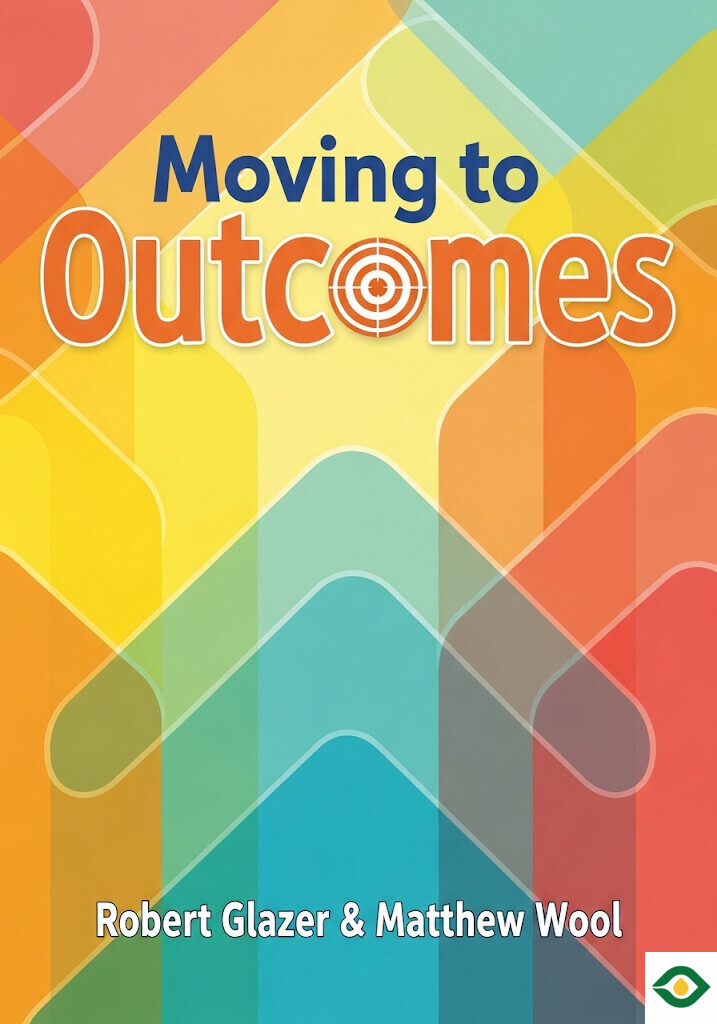Description
Marketing is one of the fastest-changing industries in the world. New platforms, new rules, and new consumer habits appear almost every year. For businesses, the real challenge is not just keeping up—it’s staying ahead of these changes. Robert Glazer’s book Moving to Outcomes explains a different way of thinking about marketing: a focus on paying for real results instead of pouring money into methods that may not work.
Imagine how investors diversify their portfolios to reduce risk. They don’t put all their money into one or two stocks. In the same way, Glazer suggests that marketers should not rely only on the giants of digital advertising. Instead, they should look for smarter and more innovative approaches, especially those based on outcomes. This is where partnership marketing comes in.
Partnership marketing means companies work together in a way that benefits both sides, and payments are tied directly to results. Think about it this way: if you run a boat rental shop, you could pay a concierge at a local resort a fixed fee for every guest they send your way. But that concierge may send anyone, even people who don’t actually want to rent a boat. A better approach is to offer them a commission only if the customer books a rental. Suddenly, the concierge is motivated to send you people who are more likely to buy. You both win.
This is the heart of partnership marketing—you only pay when the marketing effort works. Unlike traditional advertising, where businesses pay upfront for impressions or clicks without knowing if sales will follow, partnership marketing links the cost directly to success. That success could be defined as sales, new customers, or quality leads. The result is a model that is profitable, scalable, and sustainable.
Profitability comes from the fact that companies don’t waste money on campaigns that don’t perform. Scalability is possible because technology makes it easy to manage many different partnerships at once. And sustainability comes from building long-term, mutually beneficial relationships instead of constantly chasing the next trend or paying rising costs for ads that may no longer deliver.
This approach also gives smaller brands a special advantage when competing against giants like Amazon. Amazon has a huge affiliate network and marketing budget, but it often treats partners in a one-size-fits-all way. Smaller brands, on the other hand, can offer more personal attention, better communication, and unique deals. This makes them more attractive to partners who want stability and recognition.
In fact, Amazon’s own history shows why relying too much on a single platform is risky. During the COVID-19 pandemic, Amazon cut commissions in its affiliate program. Many partners who had depended heavily on Amazon suddenly faced big losses. Smaller brands could step in during this time, offering fairer and more reliable opportunities. This proves that agility and personal connection can sometimes beat the efficiency of giant corporations.
Partnership marketing also helps reduce upfront costs. Big digital companies like Uber and Airbnb built marketplaces that connect supply and demand without owning cars or hotels. Marketing can work the same way. A brand doesn’t need to master every new channel itself. Instead, it can create a network of specialists and partners who already understand these channels. These partners get paid only when they bring results, making the brand’s investment much less risky.
Consider how quickly marketing channels change. A company might build expertise in Google ads, only for attention to shift to Instagram, TikTok, or some platform not yet invented. No brand can stay on top of everything. But individual marketers and small agencies often focus deeply on specific areas. They move faster, learn faster, and adapt faster. Through partnerships, a brand can plug into this energy and skill without the heavy cost of building everything in-house.
Another important part of this strategy is influencer marketing. Many companies have already experimented with paying influencers to promote products, but this area is changing too. Instead of focusing only on big celebrities with millions of followers, brands are discovering the value of micro-influencers. These are smaller voices with highly engaged audiences. They may not reach as many people, but the trust they hold is stronger, and the results are often better.
Outcome-based influencer marketing ties payments to real performance. Instead of paying upfront for a post, brands can reward influencers based on the sales or leads they generate. This aligns perfectly with the principles of partnership marketing. It also means influencers are more motivated to create authentic and effective promotions, since their earnings depend on results.
Of course, for any new marketing model to work, company leaders must believe in it. One of the last points Glazer makes is that marketers need to persuade leadership to adopt partnership marketing. That means showing evidence, aligning the strategy with company goals, and emphasizing that money is only spent when real results are achieved. Leaders are often focused on numbers like ROI, customer acquisition, and revenue growth. Partnership marketing ties directly to those numbers.
To make a strong case, marketers can bring in examples, case studies, and data that prove the model works. They can highlight how competitors are already using partnership marketing. They can also explain the kind of internal support required, such as cooperation from finance or technology teams. By being prepared and realistic, marketers can show leadership that partnership marketing is not just an experiment but a serious growth strategy.
In the end, Moving to Outcomes shows that the future of marketing is not about guessing which ads will work or throwing money at every new platform. Instead, it’s about creating a system where everyone wins—brands, partners, and customers. Businesses pay only for success. Partners are motivated to deliver genuine value. Customers receive more authentic recommendations and experiences.
This is not only more efficient but also more sustainable. As digital marketing becomes more crowded and expensive, brands that learn how to build partnerships based on outcomes will have an edge. They will be able to grow faster, spend smarter, and connect more deeply with their audience.
Glazer’s vision is clear: marketing should move away from vanity metrics and empty impressions, and focus instead on what truly matters—outcomes. That means real sales, real leads, and real customers. By making this shift, brands can build a more resilient and profitable future, no matter how fast the marketing world continues to change.





